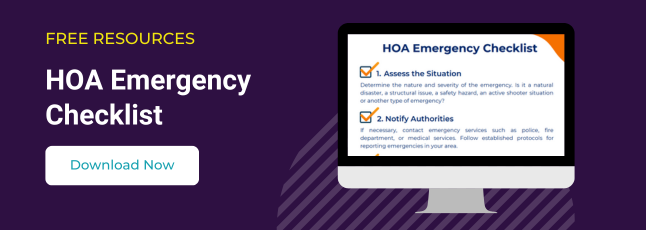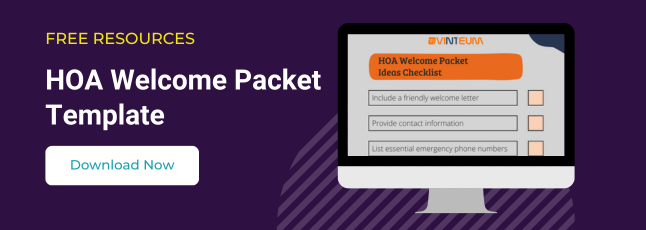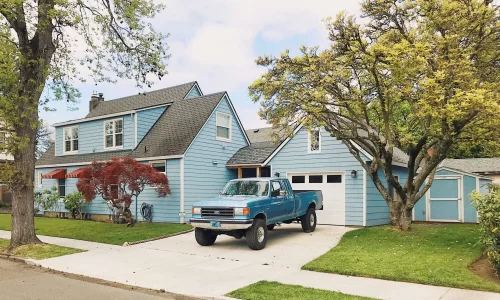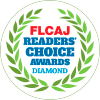An HOA Welcome Packet is a great resource to have in your community’s toolkit. It’s not just a folder with documents; it’s your way of making new residents feel at ease in their new surroundings.
It’s the first step in helping newcomers settle in comfortably.
In this article, we’ll guide you through the process of crafting an effective HOA Welcome Packet. The goal is to ensure that new members feel welcomed and informed from day one.
Let’s explore how to create a warm and informative welcome for your community.
What is an HOA Welcome Packet
An HOA Welcome Packet is your community’s friendly initiation kit for new members. It’s like an open-armed invitation to join the community, neatly bundled in a folder or package. This packet typically contains a collection of essential information and documents aimed at helping newcomers settle in smoothly.
What goes into an HOA welcome packet?
It’s a mix of informative materials, important documents, and helpful insights about your community. Think of it as a personalized guidebook tailored to your HOA. It helps ensure that new residents have all the details they need to make themselves at home.
Why Having an HOA Welcome Packet is Important
An HOA welcome packet offers a warm reception to new residents. Moving to a new place can be overwhelming, and your welcome packet can be a reassuring gesture. It helps to ease the transition by providing answers to common questions.
It also serves as the first point of contact between your HOA and its new residents. It sets the tone for their experience within the community. A well-organized and informative welcome packet not only makes newcomers feel valued but also reinforces a sense of belonging. It’s the foundation of a positive and lasting relationship between the HOA and its members.
What to include in your HOA Welcome Packet
1. Include a friendly welcome letter
Imagine opening your welcome kit, and the first thing you see is a warm, personalized welcome letter. It’s like a friendly handshake in written form. It sets the tone for the new resident’s experience in your community.
Your welcome letter should be more than a simple formality; it should be a heartfelt greeting.
Here are a few key elements to consider:
- Warm Greetings: Start with a friendly welcome. Address the new residents by name and use a warm and inviting salutation.
Here is an example:
Dear [Homeowner’s Name],
Welcome to [HOA Name]!
We’re delighted that you’ve chosen to be a part of our community.
- Introduction: Briefly introduce yourself and the HOA board. Let them know that you’re excited to have them as part of the community.
- Community Highlights: Mention some of the unique features or amenities that make your community special. This can build anticipation and excitement.
- Key Information: Highlight key points, such as the significance of the HOA, how it functions, and its role in maintaining the community’s quality of life.
- Contact Information: Provide contact details for board members. Encourage new residents to reach out with any questions or concerns.
- Next Steps: Inform them about what to expect next, such as upcoming meetings or events.
- Personal Touch: Consider including a personal anecdote or story that showcases the values of your community.
A well-crafted HOA welcome letter shows newcomers that your HOA is an organized and inclusive place. It’s the first step in building a strong sense of community.
2. Provide contact information
In your welcome bundle, one of the most crucial elements is providing contact information. This ensures that new residents have a direct line of communication when they need it most.
Here’s how to effectively include contact information:
- Key Contacts: Begin by listing the key contacts within your HOA. This may include the board members, community manager, or any other relevant personnel. Include their names, titles, phone numbers, and email addresses.
- Office Hours: If applicable, specify the office hours during which residents can reach out for assistance or inquiries.
- Online Resources: Mention the HOA’s website or online portal, where residents can find additional information and resources. Ensure that the website is user-friendly and up-to-date. If your community uses other HOA communication tools, like software or an app, make sure to let residents know about these platforms. It is important to help them get started so they can use them easily.
Providing contact information helps new residents avoid feeling lost. They will know exactly who to contact and how. Moving into a new home can be overwhelming, so by doing this, you are making their lives easier. It’s also a step toward fostering a sense of security and peace of mind.
3. List essential emergency contacts and information
It’s imperative to provide residents with essential emergency contacts and information. This becomes even more important in regions prone to natural disasters, such as hurricanes in Florida. It’s about making sure new residents are well-prepared and well-informed from the start. Here’s how to do it effectively:
- Local Emergency Contacts: Include the numbers for local emergency services, like the police, fire department, and nearby medical facilities.
- Community Security: If your neighborhood has security personnel or a neighborhood watch program, provide their contact details. This ensures residents can quickly connect with those responsible for maintaining safety within the community.
- Utility Services: List contact numbers for utility services such as gas, water, electricity, and internet providers. This information can be crucial during service disruptions, which can happen during natural disasters.
- Emergency Plan: If your community has an emergency preparedness plan, make sure to include it in the packet. It must include designated assembly areas, evacuation routes, and best practices to follow during evacuation.
- Neighbors’ Support: Consider sharing contact information for trusted neighbors who can offer assistance or guidance. This is very helpful when new residents are not familiar with local procedures during natural disasters. This can also be very important for residents with disabilities who may require extra support.

4. Include copies of important documents
One of the key elements to include is copies of important documents. Here’s why and what to include:
- Governing Documents: Start by including copies of your community’s governing documents. This usually comprises the Declaration of Covenants, Conditions, and Restrictions (CC&Rs), Bylaws, and any rules and regulations. These documents provide a roadmap for how your community operates and what’s expected of residents.
- Budget and Financials: Share financial documents, such as the annual budget and recent financial statements. This gives residents insight into the HOA’s financial health. It improves transparency and helps members understand how the HOA uses their fees.
- Meeting Minutes: Include minutes from recent HOA board meetings. It keeps residents informed about recent discussions, decisions, and ongoing projects.
- Architectural Guidelines: If your community has guidelines for architectural changes or landscaping, provide a copy. This helps new residents understand the rules for making modifications to their property.
- Community Policies: Share any policies related to pets, parking, or other common issues within the community. This keeps everyone on the same page regarding community rules and expectations.
If your community also maintains online document storage, be sure to inform residents about how they can access these documents online.
5. Answer frequently asked questions (FAQs)
When it comes to putting together the ideal welcome kit, here’s a tip that can make all the difference: including a Frequently Asked Questions (FAQs) section.
It’s your chance to answer any questions from residents. As a board member, this keeps you from having to repeat the same answers over and over.
Having an FAQ document is a smart idea for several reasons. It streamlines communication by proactively answering common questions.
It saves both time and effort for board members. This not only promotes efficiency but also ensures that residents can quickly find the information they need.
It fosters a sense of transparency and convenience within the community.
For example, if your community uses a website and/or a portal, it’s important to provide instructions for residents on signing up and logging in. Adding this information to the FAQs is a great idea. You can answer questions like:
- How can I access the community website?
- How do I find important documents on our HOA online portal?
- How can I reserve an amenity using the amenity reservation system?
6. Share information about amenities
Let’s take a closer look at what makes your community special – the amenities.
To start, highlight the key features that make your community a great place. This might include a refreshing pool, a serene park, a convenient fitness center, or a welcoming clubhouse. Explain what sets them apart and how residents can make the most of these amenities.
Share the hours when these amenities are open and any important rules or guidelines.
If booking or reservations are necessary for certain amenities, explain the process in an easy-to-follow way. Keeping things straightforward simplifies the resident experience.
Safety is a priority, of course. Include information on safety measures and regular maintenance schedules for the amenities. This demonstrates your commitment to the well-being and enjoyment of residents.
Lastly, if there are gatherings that often happen at these amenities, mention them. It’s a great way to get new residents excited about community life.
7. List nearby vendors and service providers
Listing nearby vendors and service providers is a thoughtful touch.
Begin by highlighting essential nearby vendors. These could include grocery stores, pharmacies, and medical facilities. Knowing where to find these everyday necessities is a comfort to new residents.
If there are local restaurants, cafes, or takeout places that residents often enjoy, include them. It’s a great way to introduce new arrivals to some local flavors.
Mention service providers for home-related needs, such as electricians, plumbers, and handymen. These contacts can be real lifesavers for residents when things need fixing.
Don’t forget to add entertainment options like theaters, parks, and other places for leisure. It’s a great way to show residents that fun and relaxation are never too far away.
8. Provide a community map
Providing a community map is an invaluable tool, especially for larger communities. It helps new residents navigate their surroundings effortlessly.
Start by offering a snapshot of the neighborhood’s layout. Highlight the main streets, common areas, and the locations of amenities like the pool, and the clubhouse.
If your community has walking or biking trails, highlight their paths on the map. This encourages outdoor activities and exploration.
Highlight community favorites like a charming local coffee shop, an excellent viewpoint, or a cozy park. It’s a delightful way to introduce residents to the neighborhood’s hidden treasures.
Point out important landmarks, such as nearby parks, schools, or shopping centers, to give new residents a sense of what is around the community.
This will help new residents settle in and explore.
9. Share a calendar of events
Community associations like HOAs frequently host events and meetings.
If your community maintains a calendar of events, it’s essential to include it in your welcome kit. It will help new residents stay informed about upcoming gatherings.
If your community hosts regular activities like fitness classes, book clubs, or gardening sessions, include them. These offer opportunities for residents to connect and engage regularly.
If your community has an online calendar, let new residents know how to access it. This provides an alternative way to stay updated on upcoming events.
10. Highlighting volunteering opportunities
Listing volunteering opportunities is the chance to engage residents right from the start. It encourages them to become active participants in shaping their community.
Start by sharing the benefits of getting involved. It can be a deeper connection to the community, the chance to make a positive impact, and opportunities to develop new skills.
List various volunteer roles available within the community. This might include serving on the HOA board, on an HOA committee, or participating in event planning.
Include contact details for individuals responsible for coordinating volunteer opportunities. This allows new residents to express their interest and get started easily.
Wrapping up on HOA Welcome Packet
In crafting the perfect HOA Welcome Packet, remember that it’s not just a folder of papers; it’s your community embracing new residents.
This kit sets the stage for newcomers to feel informed, engaged, and excited about their new community. It fosters a sense of belonging and trust from day one.
Keep in mind that creating an exceptional HOA Welcome Packet is a collective effort. Make sure to get input and opinions from different people.








